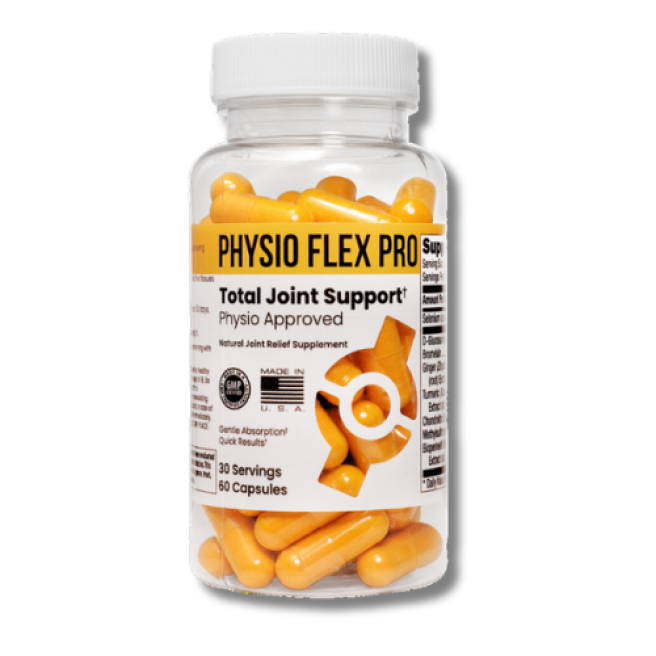Do you frequently experience joint pain after drinking alcohol? It's a common and growing experience for people who take excessive alcohol consumption. With the relief you get after all the booze, symptoms like swelling, discomfort, and inflammation in the joints can occur.
If excessive alcohol intake persists, it can destroy your liver cells, leading to severe liver conditions.
This article will help you understand how and why joint pain occurs after drinking alcohol, backed by scientific evidence, case studies, expert opinions, and dietary and lifestyle changes.
It's time to reduce frequent and unhealthy drinking habits and discover how alcohol disrupts joint health and manifests other illnesses.
Understanding the Link Between Alcohol and Joint Pain

Alcohol's Impact on the Body
Excessive alcohol drinking can form build-up fats in your liver. If you continue drinking while you have a fatty liver disease, the condition advances, causing more damage with permanent scarring. Long-term alcohol consumption may lead to chronic alcohol abuse, leading to the destruction of liver cells, which would then result in liver cancer.
Alcohol effects the liver in several conditions:
- Steatosis - The earliest response to chronic alcohol use through the liver, which is almost common in chronic heavy drinkers. Characterized by fat accumulation (phospholipids, cholesterol esters, and triglycerides).
- Steatohepatitis - Strongly contributes to the progression of fibrosis, cirrhosis, and hepatocellular carcinoma.
- Fibrosis and Cirrhosis - There's fibrogenesis and chronic inflammation in the presence of heavy long-term consumption, causing broad bands of fibrous tissue to face deposition. This leads to portal hypertension due to altered hepatic blood flow and distorted liver architecture.
- Hepatocellular Carcinoma - Occurs when a tumor grows in the liver, commonly known as liver cancer. It naturally originates in the primary liver cells or hepatocytes.
Substantial evidence in a review provided that alcohol increases the likelihood of HIV progression and transmission as it can disrupt the immune system. The progression and development of certain cancers may also be affected by alcohol-immune interactions.
As reported in a recent study, over half of the individuals in the U.S. of 18 years of age undergo alcohol consumption, wherein alcohol use was reported in the last 30 days. In 2019, 9 million Americans engaged in chronic or binge heavy drinking.
The anticipation of dehydration, when it's under the condition of alcohol consumption, may be further harmful to cognitive performance, based on a study. This is due to changes in altered blood flow and neurotransmitter actions as proposed mechanical reactions on the central nervous system.
Inflammation and Alcohol
A highly reactive protein called acetaldehyde and its generation contributes to liver damage. Alcohol metabolism starts in the liver, where enzymes crush it into acetaldehyde to acetate. It binds to DNA, lipids, and proteins to form potentially immunogenic adducts. These adducts can cause hepatocellular inflammation and damage as it generates an adaptive immune response.
In a 2022 study, several molecular mechanisms in multiple organs, including the liver, gut, and brain, alcohol intoxication may cause inflammation. Alcohol-induced inflammation in the gut and brain are intricately connected. Also, alcohol, activating microalgia as immune cells, can directly affect the brain as it triggers neuroinflammation and pro-inflammatory cytokines.
Alcohol-Related Conditions That Cause Joint Pain

Gout and Alcohol Consumption
A 2021 study provided that alcohol as a risk factor is recognized for gout flare and increased uric acid. The majority of authors in this study observed that there's a relationship between gout attacks and episodic alcohol consumption.
Compared with no alcohol consumption in the prior 24 hours, for alcoholic beverages, the risk of recurrent gout attack was 1,36 and 1.51 times higher. All types of alcoholic beverages, regardless if its liquor, wine, or beer, were in varying degrees, associated with risk of recurrent gout attacks that are increasing.
In the presence of diuretic use and high purine intake, and while allopurinol and colchicine use were mitigated to varying degrees, these effects were stronger. On the risk of recurrent gout attacks, NSAIDs didn't modify the effects of alcohol intake.
Rheumatoid Arthritis and Alcohol
Rheumatoid arthritis, being an inflammatory condition, allows alcohol to worsen symptoms and exacerbate inflammation. Individuals with chronic alcohol abuse can promote joint damage by interfering with body tissue repair and cartilage breakdown.
Before the occurrence of symptoms of rheumatoid arthritis in women, there was already an association between markers of inflammation and alcohol consumption. This was reported after controlling for age at smoking, menopausal status, blood collection, body mass index, duration of breastfeeding, and oral contraceptive use.
Managing and Preventing Joint Pain After Alcohol Consumption
Dietary and Lifestyle Changes
It's crucial to manage joint pain after drinking alcohol to prevent experiencing any severe conditions that may affect your joints in the long run. You can start preventing joint pain by prioritizing your overall health daily, which can also protect you from having other diseases.
These dietary and lifestyle changes include:
- Staying hydrated - Proper hydration is necessary to maintain healthy skin and joints. While the general water intake is 8 glasses a day, taking an additional glass is crucial, especially if you consume alcohol. Water limits the amount of alcohol you consume.
- Maintaining a balanced diet - If you want to reduce alcohol consumption, you need to start staying consistent in maintaining a healthy and well-balanced diet. Incorporate Vitamin B6 foods like avocados and bananas and complex carbohydrates like legumes and grains to reduce your alcohol cravings.
- Moderation in alcohol intake - The Centers for Disease Control and Prevention recommended moderate drinking by limiting alcohol intake in a day to 2 drinks or less for men, while 1 drink or less for women in a day.
- Regular exercise - Exercise interventions in a 2021 study specifically improve physical fitness and reduce weekly drinking volume, being an effective adjunctive therapy for alcohol use disorder (AUD).
When to Seek Medical Help
If you're suffering from symptoms like swelling, fever, limited range of motion, and persistent and severe joint pain, seeking medical attention is crucial. Consult a healthcare professional to provide you with personalized advice and assessment in treating your existing joint pain due to drinking alcohol.
They will also let you know if you have any existing condition rather than joint pain due to alcohol intake, which is why immediate medical attention is required to prevent long-term severe diseases.
Real Life Experiences
Case Studies
A case of a 58-year-old female had a chief complaint presented to the private practice about "degeneration of right ankle bone." The patient had a history of chronic alcoholism and hypertension.
At the time of presentation, she denied any constitutional symptoms, pain, or trauma in the lower extremities. She also complained of arthritis and chronic numbness in her feet. Conservative management was successfully employed in this case, similar to diabetic patients.
Alcohol, when used in a medical procedure, is beneficial to treat chronic knee pain. A 51-year-old female in a 2019 study has a history of left knee pain, which became severe after surgery.
She had persistent knee pain when she visited the clinic and had a history of medial meniscus anterior horn tear for 2 years. For treatment, genicular nerve neurolysis with alcohol was performed. The patient reported good pain relief and can sleep well after a six-week follow-up.
Expert Opinions
"Once someone has developed RA, it's possible that the anti-inflammatory and analgesic effects of alcohol may play a role in reducing the severity of symptoms." - Dr. James Maxwell, consultant rheumatologist
"The hip joint is a ball and socket joint. Too much of alcohol can affect blood supply. And without blood, the bone tissues die. The patient can develop symptoms such as pain in front of the thigh, knee, lateral part of the hip or groin." - Dr. Deen Muhammad Ismail, head and director of Institutes of Orthopaedics and Traumatology in Madras Medical College
"What we can do is to stop further damage by avoiding more alcohol consumption and providing supplementation with vitamins, especially in the B complex. People who take other sedating medications for pain should avoid alcohol. These are medications like opioids, antidepressants, anticonvulsants, etc." - Dr. Andrea Furlan
FAQs
Q1: Why do I experience joint pain, specifically after drinking beer?
Uric acid is broken down in the body due to beer that contains purines. Gout often results from excessive uric acid, and beer with high purines can worsen or trigger the symptoms of gout. Grains and yeast are specific ingredients found in beer that can trigger allergic reactions and manifest as joint pain.
Q2: Can certain types of alcohol worsen joint pain more than others?
Yes, hard liquor like rum, whiskey, and vodka quickly contribute to dehydration than beer or wine, leading to joint lubrication and joint pain. There's an increased risk of gout due to beer containing high purines.
But wine has anti-inflammatory effects since it contains an antioxidant called resveratrol. Moderate red wine consumption has the potential to alleviate joint pain.
Q3: Is there a safe amount of alcohol to consume to avoid joint pain?
Two standard drinks per day are required for men for moderate alcohol intake, while one standard drink per day is required for women. A standard drink contains 14 grams, equivalent to 1.5 ounces of distilled spirits, a 5-ounce glass of water, and a 12-ounce beer.
However, it's important to note that individual experiences in alcohol moderation may vary since some experience allergies to specific components and those that have existing conditions.
Q4: How does alcohol interact with medication for joint pain?
Taking acetaminophen while drinking alcohol increases the risk of liver damage. Nonsteroidal anti-inflammatory drugs (NSAIDs) like naproxen, ibuprofen, and diclofenac can increase the risk of ulcers and gastrointestinal bleeding. Oxycodone or hydrocodone are opioid medications that can increase the risk of respiratory depression, leading to dizziness or drowsiness.
Q5: Can long-term alcohol consumption lead to chronic joint issues?
A 2015 study showed findings that a novel risk factor for the development of osteoarthritis is chronic alcohol consumption. Also, chronic alcohol consumption leads to the subsequent production of cartilage destructive enzymes as it stimulates catabolic signaling pathways like phosphoprotein kinase C δ.
Q6: Are there natural remedies to alleviate joint pain after drinking?
Ginger as a natural remedy is used for arthritis, muscle pain, and swelling.
Turmeric is a type of spice that possesses a long history in terms of inflammatory conditions as a quick remedy, including arthritis. To reduce alcoholism as compulsive drinking, opt for herbs such as Skullcap, German Chamomile, or Angelica. Use 1 heaped teaspoon to each cup of boiling water then infuse it for 5-15 minutes. Make sure to drink 1 cup 3-4 times daily.
If you're looking for a dietary supplement that contains ginger and turmeric to boost the effectiveness of natural remedies, consider trying Physio Flex Pro to treat your joint pain after drinking. It has anti-inflammatory properties and strengthens your joints.
Conclusion
Individuals who take excessive alcohol consumption are prone to experiencing joint pain, precisely its symptoms like swelling, inflammation, and discomfort. If joint pain persists without immediate treatment, conditions like gout and rheumatoid arthritis can occur.
Aside from joint pain, excessive alcohol drinking is primarily prone to fatty liver disease, which can lead to liver cancer due to the destruction of liver cells. Therefore, seeking dietary and lifestyle changes like hydration, diet, and exercise are crucial to prevent joint pain after drinking.
Safe alcohol consumption is essential by maintaining moderation of alcohol intake daily, two standard drinks for men and one standard drink for women.
For clarity and guidance, don't hesitate to seek medical advice from a healthcare professional for personalized advice and assessment.






